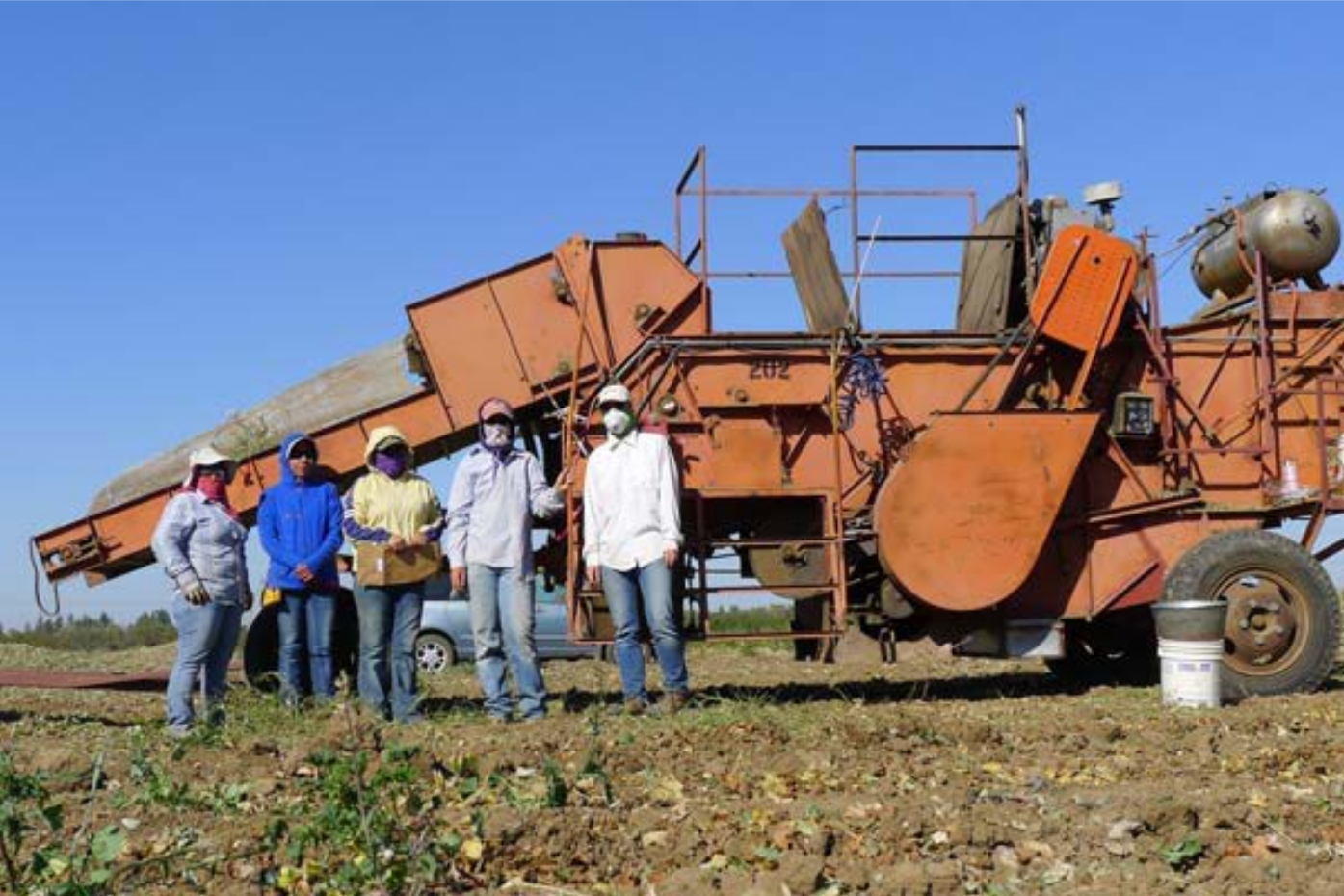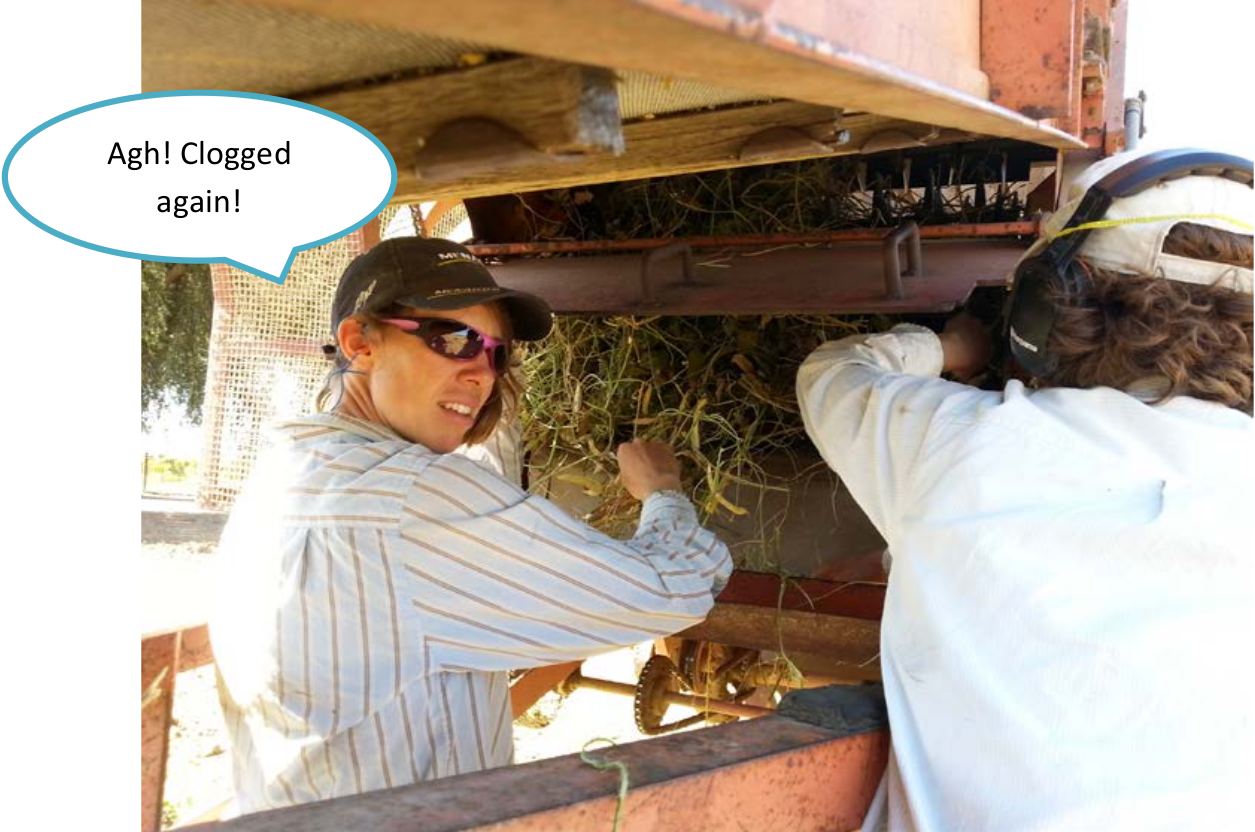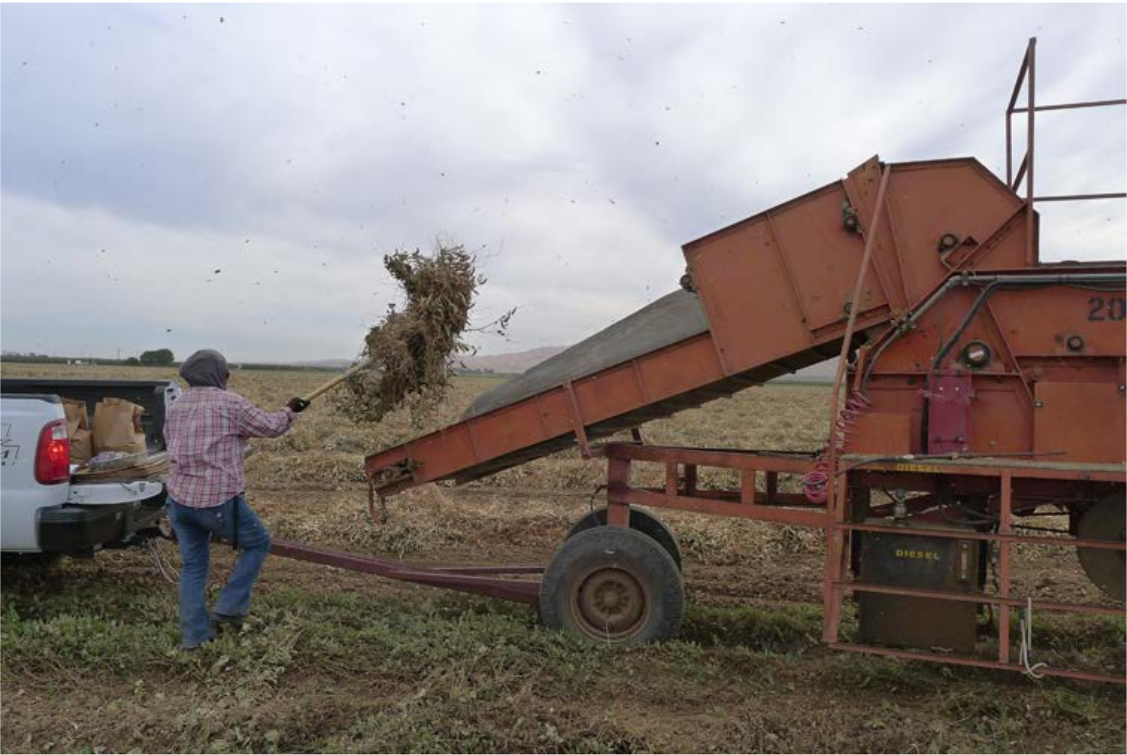Improving Dry Bean Field Breeding
Paul Gepts' Lab, UC Davis Department of Plant Sciences, Davis, CA, USA
ID: PUI8
Relevant Skills: mechanical design
The Problem
Background
The Paul Gepts lab comprises a diversified group of researchers studying the breeding and genetics of dry beans (common beans such as black beans, kidneys, and pintos as well as lima beans and garbanzo beans). Field work comprises a large portion of our research, since it is the best way to study the physical traits of the bean plants that are of interest to us. We also plant field trials because they are the most informative for farmers in our central valley region who are interested in growing the new bean varieties that we breed for production.
Field Equipment
Although we are working in a modern age where we can use genetic insights to select for disease resistance, growth habit, and other desirable traits, we are still working with farm equipment that was built and developed in the 1940s. Although most of this equipment is in relatively good condition for its age, we are not using it for the purposes for which it was intended.

Figure 1: Our CB Hays Standard Thresher
As breeders and geneticists, we have a large number of field plots that are small in size but which must be harvested and kept separate for accurate yield estimates and for genetic purity. The harvest equipment which we are using was developed for much larger fields and therefore has design features which are appropriate for the type of plant we are harvesting but which are not appropriate for the way we must use the machine. For example, the clutch of our CB Hays Standard harvester is highly stressed by the fact that we must constantly engage and disengage it to clean out the machine between our ten foot plots; in seven acres, we have nearly 2,000 of these plots which must go through the harvester in a harvest month. Under the harvest situation for which this harvester was designed, the clutch would only have to be engaged once for that entire area. The CB Hays harvester also has no reverse, and can clog with plant materials if it is not fed properly or if a plot is too green; in th is case the machine needs to be shut down completely, and the machine must be unclogged with hands and knives, sometimes delaying the harvest crew for half an hour or more.

Figure 2: Lima bean vines wrap tightly aournd the drum knives, forcing us to shut down the entire machine.
There is no header on either of our harvesters, which means that the very large and cumbersome bean plots must be lifted either by hand or with a pitchfork into the harvest machines. This places a great deal of ergonomic stress on the harvest crew, who may perform these activities for two months or more, five to seven days a week, for four to eight hours a day during the fall harvest season.
The inefficiency of the harvest creates an extended harvest period, and therefore contributes to a lack of uniformity in yield data, and in a normal year of precipitation, the length of our harvest could make our current harvest system unfeasible. The bean plots must be thoroughly dry for the harvest equipment to function correctly, and early fall rains could ruin our fall harvest (an all of our yield data) at any time.

Figure 3: We spend many hours with pitchforks. This is a bush plot, and can be lifted in pieces by one person; a vine plot may take 2 or three people to lift into place on the belt. A header that picked up the plots from the ground could save our shoulders and backs.
Other harvest problems
Contamination by chaff (the unwanted part of the plant that is not seed), and dirt clods. After harvest, our bean seeds currently have to be sent through multiple machines to clean them for accurate weighing and safe storage. Modern harvesters for the seed breeding industry often have built-in screens and blowers to clean the plot while it is being harvested in the field and then weigh it automatically as it is being deposited into a bag. Perhaps there is a simple way to add some or all of these onto our current harvesters to reduce the months of labor it now takes to clean the seed after harvest.
Desired Outcomes
Creating a more mechanized and ergonomic way to cut, lift, thresh, clean, and weigh our bean plots. Even a small improvement in any one of these steps could greatly expedite the speed of our field harvest, lead to more accurate data and improve seed purity, reduce labor costs and the risks of injury due to poor ergonomics, and increase our potential field research capacity.
Contact Information
The winter season is a slower time for us, so I would be happy to mentor any students/student group interested in trouble shooting our harvest problems. There may also be potential for developing high throughput phenotyping systems for summer data collection if there is student interest in projects of that sort.